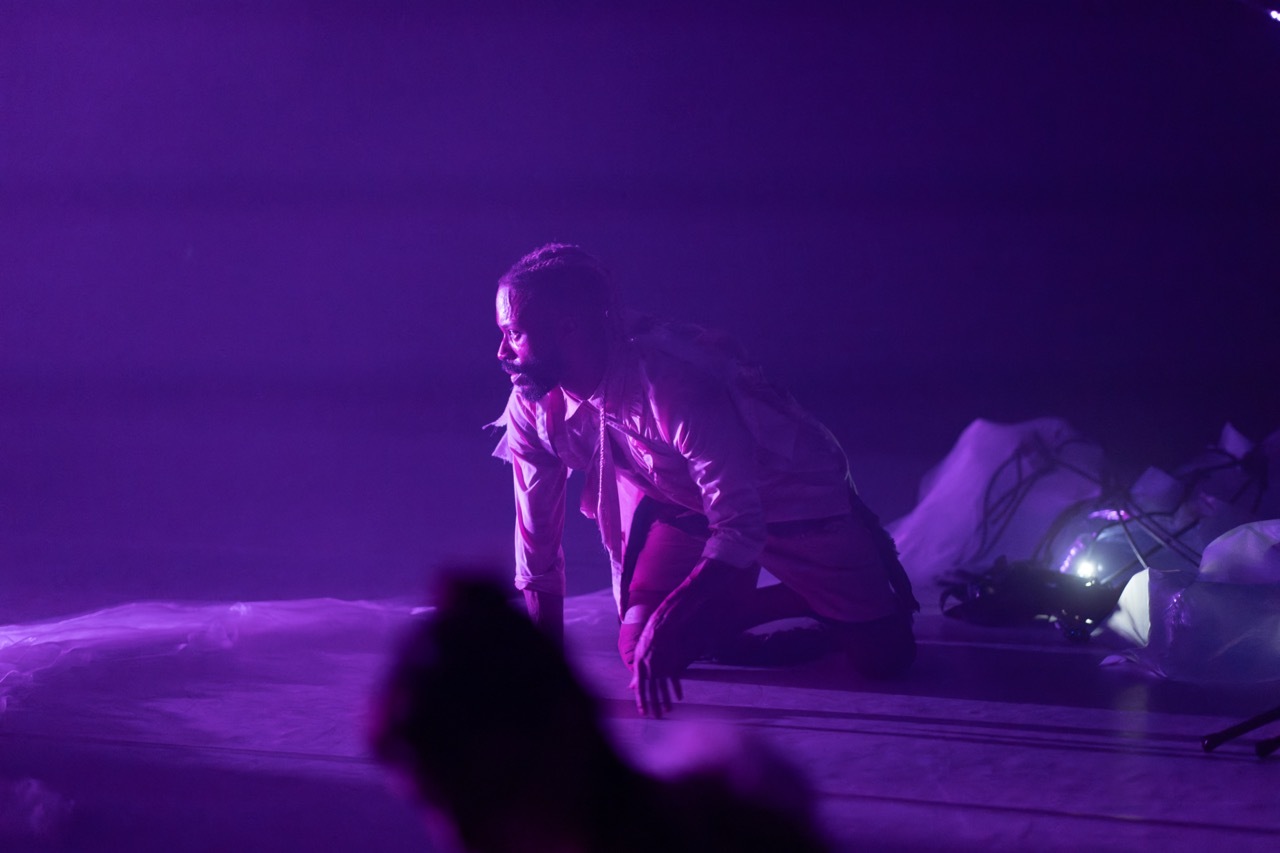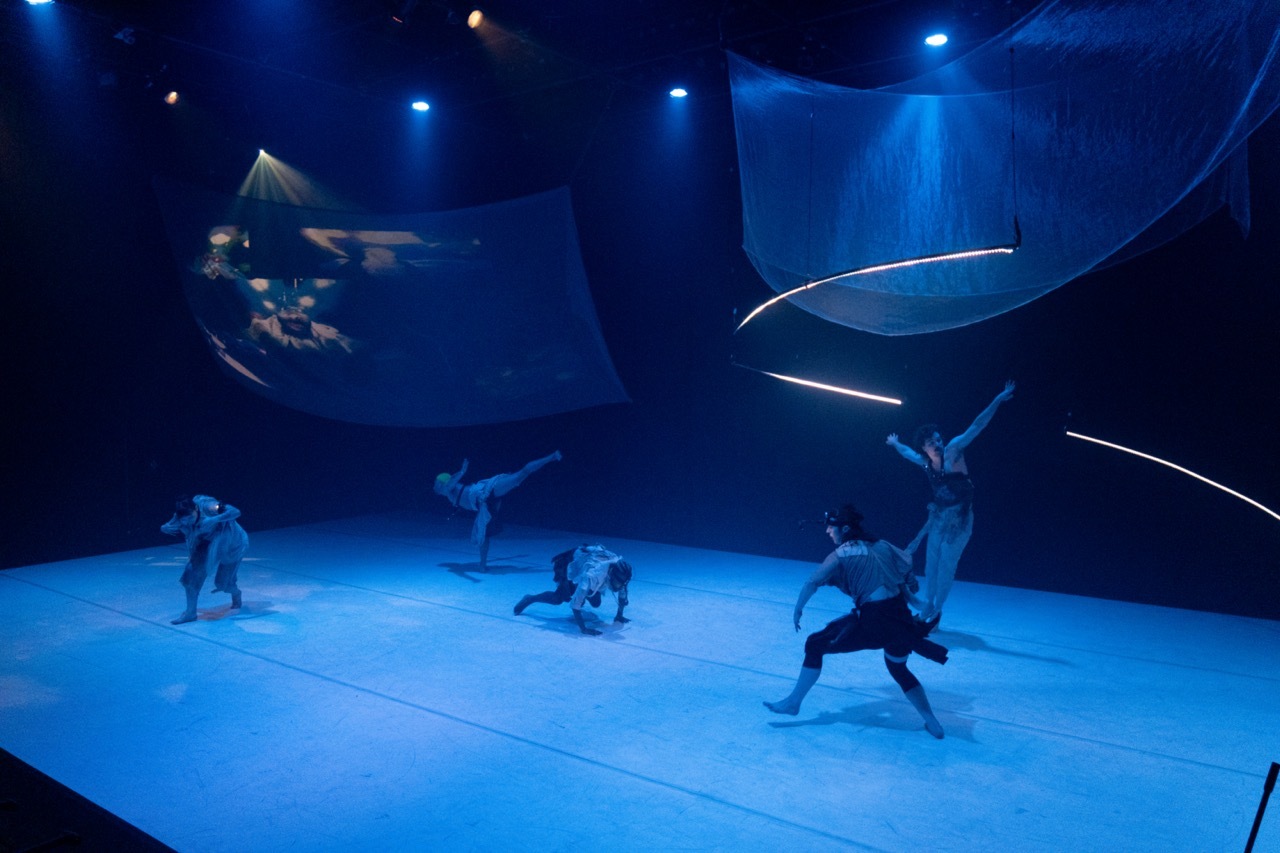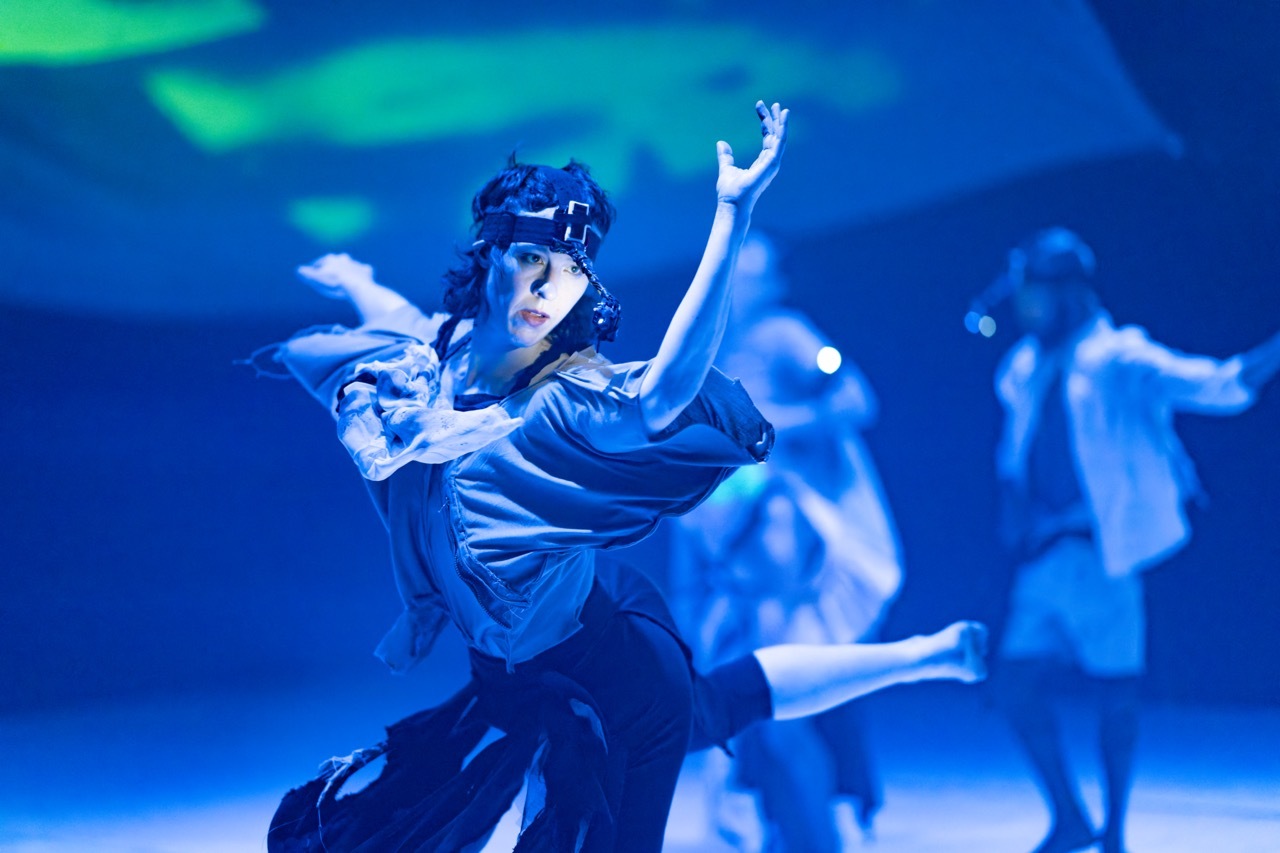Storms, Sensationalism, and Self-Reflection
Review of SUPERCELL by slowdanger at Velocity Dance Center
Written by TeenTix Newsroom Writer Angelina Yu and edited by Teen Editorial Staff Member Daphne Bunker

In the 21st century, the possibility of supernatural disasters constantly looms above us. Each year, we are subject to more and more unprecedentedly catastrophic events, an aspect of environmental collapse that threatens the livelihoods of thousands. It’s almost surreal, except for the fact that it isn’t: this is the new world we live in. These devastating occurrences, along with how people and the media react to them, are part of what’s examined by slowdanger’s SUPERCELL. An hourlong quintet performance that questions human attraction and passivity towards environmental events. I was lucky enough to partake in the self-reflection involved in watching the show, presented by Velocity Dance at 12th Avenue Arts from March 21 to 24, and the experience left me contemplative, to say the least.
My journey began in a crowded foyer filled with chattering Seattleites. As the sun set, we made our way into the theater, and the change was drastic. In an instant, we were transported from the brightly lit, corporeal world to a hazy realm of darkness. Two sheets of sheer cloth hung down from the ceiling and the yellow-tinged shine of a pale red cast mesmerizing shadows through them. On the stage, five performers lay together in the shape of a star, each bearing a large, see-through sack full of what seemed to be water, connected to those beside them by a complex entanglement of rope.
I made my way to my seat, and before I knew it, the dancers began to twitch and shift in sporadic movements. It felt like watching a timelapse of plants sprouting in a forest, and the sounds of unintelligible whispers, heavy breathing, and crashing waves emanated from speakers in the background. Slowly, the dancers came to life, like ancient creatures who’d been roused from a millennia-long slumber, lugging their bags of water arduously behind them as they unwove the labyrinth of ropes connecting them. One broke free from the group and made their way towards the front row with a microphone, holding it in front of audience members’ faces as though inviting them to speak. It was somewhat terrifying, this abrupt, belligerent confrontation, and my heart began to race as they approached my seat.

Suddenly, the lights dimmed, and the anticipation of the audience built until a crackling hum of electricity marked the start of the show.
The dancer took up their microphone again and began to speak. Their words were somewhat incomprehensible, but from their haunting tone, I understood the gist of the monologue. They were narrating the observation of a forming storm: a supercell. As the emotion in their words built, they were joined by another performer, their two voices together a distressed cacophony of panic that, combined with the dancers mirroring each other on stage, perfectly emulated the turmoil of human emotion in the face of fear. I could feel their agitation, their desperate need to be heard. The discordance between them made the scene so incredibly real that I felt like I, too, was witnessing a supercell approach. The dancers moved in rippling, fluid movements, mirroring the turbulent whipping of wind and rain while also portraying the terror of the innocents caught in the supercell’s path.
Over time, the performance shifted from observational panic to harsh criticism. One speaker asked the other if they were listening to them or not, and it felt like a direct call to the world’s inhabitants, telling us to look at the world around us and, at the very least, acknowledge its deteriorating state. They called out dozens of issues present in modern society that were linked directly and indirectly to environmental disasters: collectivism, mob mentality, deforestation, patriarchy, social media obsession… the list goes on. And as a teenager who’s very much obsessed with social media (though not so much deforestation and patriarchy), I felt seen—and not necessarily in a good way. But I think that this was the point of the show, to hold a mirror to our flaws so that we could reflect on them.

Just when the speech reached its climax, there was an abrupt shift. Everything went quiet. People often use the saying “the calm before the storm,” but this was the calm after the storm– when the world sounds half-alive and the tides slowly recede. This moment felt like being trapped in a deep cave, like a search for light and liberation. The dancers twisted to and fro, a silent montage of human struggles; their slowed, disheartened movements reminded me of the prisoners in Plato’s cave, condemned eternally to observe mere fragments of reality. This contemplative calmness, so at odds with the violent scenes of before, was like a half-lit still life painting, and in the silence, I recalled the performers’ earlier desperation. As the show came to a close, the harsh dichotomy between each half of the performance left me ruminating on my contributions to sensationalism. I wondered how I, as an individual in a sea of billions, doing my best to spread awareness while avoiding sensationalism, could make a difference.
In a world that revolves around social media and consumption, it’s immensely important for people to consume media like this, media that brings our flaws to light and allows us to consider our impact on the world around us. SUPERCELL manages to do this in a terrifyingly confrontational yet undoubtedly magnificent showcase of artistic talent.

Lead Photo Credit: Erin O’Reilly
The TeenTix Newsroom is a group of teen writers led by the Teen Editorial Staff. For each review, Newsroom writers work individually with a teen editor to polish their writing for publication. The Teen Editorial Staff is made up of 5 teens who curate the review portion of the TeenTix blog. More information about the Teen Editorial Staff can be found HERE.
The TeenTix Press Corps promotes critical thinking, communication, and information literacy through criticism and journalism practice for teens. For more information about the Press Corps program see HERE.

